How to Build a Musrhoom Garden
Mushrooms in the Garden as Companions
While mother and daughter enjoy a morning heart to heart over coffee, I snapped a sneaky photo and then got to work on incorporating mushrooms into the garden.
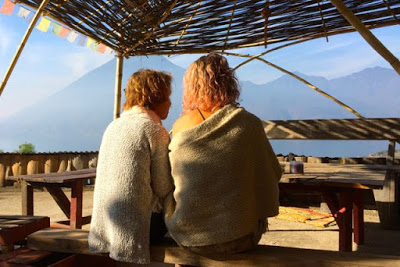
Here we have some buckets that are past fruitation and full of mycelium from the lab. One of the best things you can do with this wonderful waste material is feed worms. Building a worm farm with red wigglers which feast on mycelium and produce super nutrient rich worm castings is the ideal way to turn a byproduct of a mushroom farm into a valuable resource. We don't have a worm farm here at Fungi Academy yet but I'll make the case for building one.
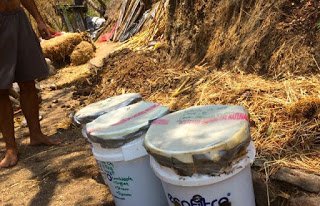
For now, we have just taken the mycelium out of the buckets and buried them into a newly dug garden bed which happens to have soil in need of amending. We planted some beans on top and should end up with nitrogen rich soil ready for next season.
Keep in mind that some mushroom varieties like White, Pink and Blue Oyster take away a lot of energy from plants but others are garden symbiotic like King Stropharia (also called Garden Giant) and Elm Oyster are wonderful garden companions which help enrich the soil and distribute nutrients.
Here is the bed we made with delicious Garden Giants and medicinal Turkey Tails.
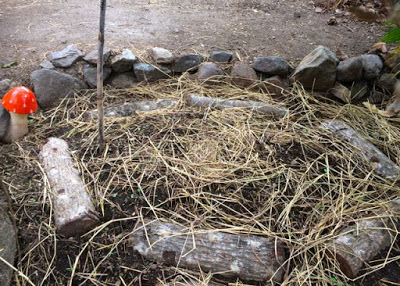
The first thing needed is a shady spot with some soil that can retain a bit of moister. We dug down a few inches and lined the bottom of the bed with cardboard. After, we wet it throughly and added a thin layer of soil. Then we took our Garden Giant mycelium which was growing on wood chips and layered it on top of the cardboard. Check previous posts for info on how to grow on different mediums. We mixed in some corn waste which had been pasteurized in lime water (simply soaked a bag of corn waste in a barrel of water that had limestone rocks in the bottom)
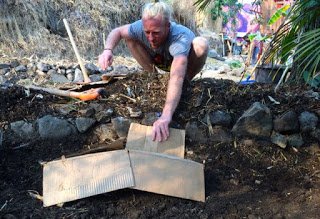
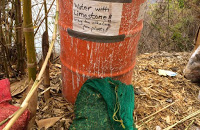
Continue layering soil, mycelium inoculated wood chips, corn waste and repeat to make a lasangia like bed. The mycelium are going to search out each other and try to join together by consuming whatever is in-between. When they have established a stable network of mycelium they will be ready to fruit - that means mushrooms will be popping up.
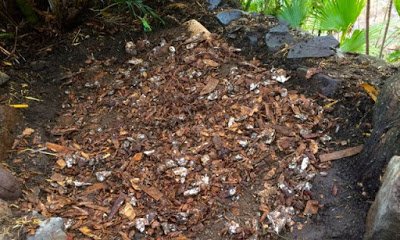
Once we built up our Garden Giant on wood chips with corn waste and soil bed we decided to experiment with surrounding the area with Turkey Tail inoculated logs. Again, if you're curious about plugging logs with mycelium then please check out a previous post.
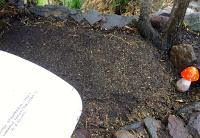
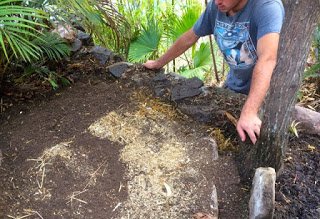
Finally we marked the bed with a bamboo pole and added a bit of inspiration for the mushrooms.
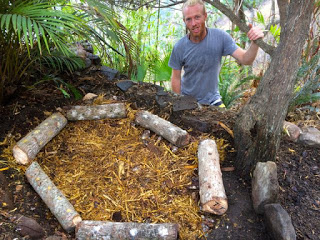
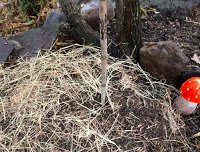
Below you can see some other small terraced beds we made. There are Garden Giant inoculated wood chips mixed with corn waste under the stacked rock walls. We're hoping they start growing out and around the rocks as they are tend to spread and pop up away from where they were first established. This idea came from a friend who said they made trenches with Garden Giants under the pathways in their gardens.
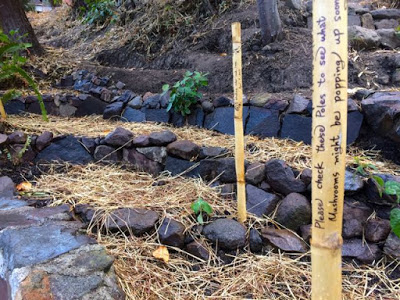
All of this fungi work has totally inspired me to learn more about how mushrooms can be designed into gardens. I strongly feel mushrooms are a fascinating system that not many people are confident inputting into their set ups. After living and studying here I cannot wait to go forth and help spread spores.
yes you are incredible, I do not know how to cultivate mushrooms, but I understand well about its benefits, for health, I like you, good luck friend